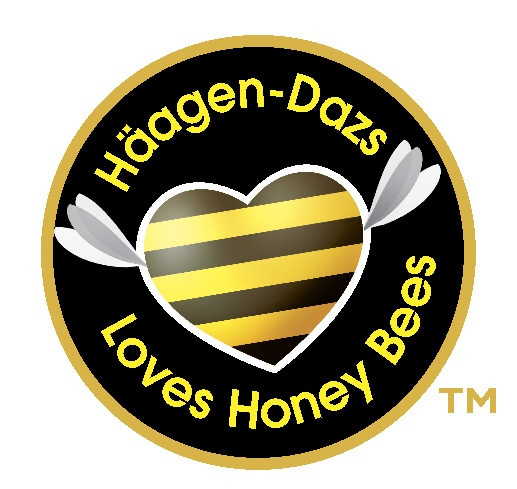Human and Natural Hazard Impacts: Honey Bees
Problem
Plight of the Honeybees
I recently saw a bee with a bunch of orange stuff alI over its legs. I think it was pollen. It started to fly toward me, and I was about to swat it when my friend said, "NO" we need bees! No bees = No Ice Cream!" What? I love ice cream!
She said she'd recently heard that honeybees are in danger and people shouldn't kill them. We looked up honeybees and learned that honeybees are experiencing something called colony collapse disorder which is a syndrome defined as a dead colony with no adult bees or dead bee bodies but with a live queen and usually honey and immature bees still present. No scientific cause for CCD has been proven. We even learned that honey bees are responsible for pollinating as much as one third of all American crops. According to Haagen Daz as much as 40% of its flavors use ingredients in some way dependent on the insects, such as wild berries, pecan nuts and pears.
You might not think that bees and ice cream have much in common other than the fact that they may be attracted to your sweet, melting confection on a hot summer day. But you would be wrong! At issue are the disappearing bee colonies in the United States, a situation that continues to mystify scientists and frighten foodmakers.
Keywords
melittologist
bees
honeybees
animal housing
environmental aspects
Honey bee (Apis mellifera)
Resources

-
Silence of the Beesgreat introduction
-
The Head-Scratching Case of the Vanishing Bees NY Timesvideo and article
-
Bee Detective lesson from The Nature Conservancy& many more
Books and Videos
-
The Song of Increase by
ISBN: 194247900XPublication Date: 2014-12-16 -
The Bee by
ISBN: 0691161356Publication Date: 2014-08-24 -
Bee Time: Lessons from the Hive by
ISBN: 9780674368392 -
The Bees in Your Backyard by
ISBN: 0691160775Publication Date: 2015-11-24 -
Pollinator Friendly Gardening by
ISBN: 0760349134Publication Date: 2016-01-15 -
Gardening for Birds, Butterflies and Bees by
ISBN: 1621453030Publication Date: 2016-02-02 -
The Bee-Friendly Garden by
ISBN: 1607747634Publication Date: 2016-02-09 -
The Bee Book by
ISBN: 1465443835Publication Date: 2016-03-01 -
Haagen-Dazs 'Help The Honey Bees' cause-related marketingCall Number: Video
-
Haagen Dazs Honey Bees Campaign Inspiration VideoCall Number: Video
-
Silence of the BeesCall Number: Video
I wonder
I wonder if having every home in America plant flowers or vegetable gardens would help the honeybee population? Would providing plants with native vs. non native plant pollen prevent Colony Collapse Disorder? Would using organic pesticides vs. regular pesticides help the honeybee population make a comeback? Or do we need to find a natural predator for the mites that are plaguing them?
What is your hypthesis? What are your variables?

Background

Over the past six years, it has become more apparent each year that the honey bee population has been decreasing. Although this may seem like good news to people who are allergic to bees, it can be a serious problem because the pollination of one third of our food supply depends on honey bees. It has been predicted that 60 years after the extinction of the honey bee, there will no longer be human life on earth. Forty percent of natural Häagen-Dazs ice-cream flavors include ingredients that are dependent on honey bee pollination.
Problems with the bee population started as early as 2003 when all of the honey bees in Uruguay died. 2007 was the year that the US recognized a marked decrease in the honey bee population. Since then, countries all over the world have recognized the decline. The cause of this alarming phenomenon has been termed Colony Collapse disorder. This identifies the problem of bees abandoning their hives and dying. The cause of CCD has been blamed on many things including global warming, cell phones, viruses, fungi, mites, pesticides and a change in the Earth’s magnetic field. Until research indicates a certain cause, a direct solution will not be able to be identified.
If a solution is not found soon enough, CCD will eliminate honey bees and threaten the food supply as well as businesses that depend on it like Häagen-Dazs.
Database Articles
Gale Global Issues in Context
Alic, Margaret, PhD. (2013). Colony Collapse Disorder. In Jacqueline Longe (Ed.), The Gale Encyclopedia of Environmental Health (Vol. 1, pp. 185-189). Detroit: Gale.
Neonicotinoids. (2013). Alternatives Journal, 39(6), 11.
New Threats To Honey Bees. (2012, January 6). Manila Bulletin. Manila Bulletin Publishing Corp.
Ortho to Phase Out Chemicals Blamed for Decline in Bees. (2016, April 13). New York Times, p. B2(L). New York Times Company.
Hutchins, Aaron. (2015, June 1). Secrets of bee hotels: room size, location and maintenance all affect whether it's a full house or not. Maclean's, 128(21), 48+.
A bee-line highway. (2015, September). New Internationalist, (485), 11.
Bees are harbingers of environmental change; Historically they have signalled problems before they become problems. (2015, July 3). Spectator [Hamilton, Ontario], p. A13. Torstar Syndication Services, a division of Toronto Star Newspapers Ltd.
Create a bee-friendly environment in the garden. (2014, March 28). Brant News [Brantford, Canada], p. 1. Torstar Syndication Services, a division of Toronto Star Newspapers Ltd.
Winston, Mark. (2014, July 15). Our Bees, Ourselves. New York Times, p. A25(L). New York Times Company.
Science in Context
Global Issues in Context
Global Issues in Context from Gale




